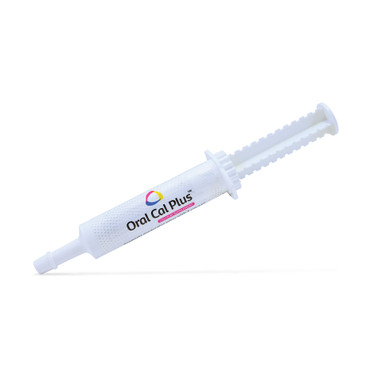Playtime for Bunnies? Seriously..hop to it!
Estimated 0 min read

Rabbits at play.
With every hop, rabbits continue to convince us that they’re just about some of the cutest, most playful pets in the world.
However, it’s not just that rabbitsseemplayful; they justarethat naturally playful. We mean it, there’s no bunny business here – playtime is actually an essential part of maintaining your rabbit’s physical and mental health.
In this blog, we’ll explore the science behind why rabbits need regular play and the unique health benefits they derive from it. Plus we’ll offer tips on how to engage your furry friend in delightful play sessions at home.
On a serious note. Easter is around the corner. PLEASE don’t give a rabbit as a Gift unless you are convinced of the recipient. Fact is 80% of rabbits die within one year of ownership due to neglect, mia or disease.
So, let’s “hop” to it and learn how to keep your rabbit is happy and healthy as can be!
Quick facts about how to Play with Rabbits:
- Regular play for rabbits helps maintain a healthy weight, strengthens their muscles, and prevents boredom-related issues by providing mental stimulation
- Interactive play with toys, games, and simple tricks helps strengthen the human-rabbit bond, improve socialization, and promote positive behavioral development
- Providing a rabbit-safe play area with a variety of toys, hiding places, and opportunities for exploration encourages natural behaviors and keeps your rabbit engaged.
Why Playtime is so important for Rabbits

An exploring rabbit.
Rabbits are intelligent, social, and active animals that thrive when provided with opportunities for play and exploration. Playtime is not merely a luxury for these creatures; it is a fundamental aspect of their overall well-being.
One of the main reasons playtime is essential for rabbits is that it mirrors their natural behavior. According to Dr. Susan Brown, wild rabbits spend a significant portion of their day foraging for food, digging, and interacting with other rabbits. Providing pet rabbits with a stimulating environment and engaging them in play allows them to express these natural behaviors. Dr. Anne McBride, a veterinarian and rabbit behavior expert, also notes that social interaction and play are crucial for rabbits’ emotional health, as they help prevent loneliness and boredom.
Furthermore, playtime serves as a critical outlet for rabbits to expend their energy. Dr. Dana Krempels, a rabbit specialist at the University of Miami, emphasizes that rabbits need plenty of space to exercise and play, as well as a variety of toys and activities to keep them entertained. Of course, playtime also provides a number of distinct benefits to rabbits’ physical and mental health.
The physical and mental health benefits of playtime for rabbits
Exercise and Weight Management
Regular play is vital for maintaining a rabbit’s healthy weight and muscle tone. According to the House Rabbit Society, rabbits need at least three to four hours of exercise daily to prevent obesity and associated health problems. Obesity in rabbits can lead to serious health issues such as heart disease, arthritis, and liver disease. A study conducted by the University of Bristol also found that active rabbits had a lower risk of developing pododermatitis, a painful condition that affects the footpads. Another study conducted at the University of Utrecht found that providing rabbits with the opportunity to exercise in a larger space resulted in a significant decrease in aggressive behaviors. This may indicate that regular physical activity is crucial not only for physical health but also for promoting a more harmonious environment for them.
Mental Stimulation and Enrichment

Rabbits need mental stimulation.
Mental stimulation is crucial for a rabbit’s well-being, since boredom can lead to stress, depression, and destructive behaviors. A study published in the Journal of Applied Animal Welfare Science found that rabbits who were provided with environmental enrichment, such as hiding places and toys, exhibited fewer signs of stress. Additionally, they were more likely to engage in exploratory behaviors. Researchers from the University of Edinburgh discovered that rabbits that had access to social and environmental enrichment displayed increased levels of brain-derived neurotrophic factor (BDNF). BDNF is a protein that plays a crucial role in brain health, so these findings suggest regular mental stimulation may have a positive impact on a rabbit’s cognitive function.
Strengthening the Human-Rabbit Bond
Playing with your rabbit helps build trust, fosters a strong bond, and creates a more enjoyable relationship for both of you.. According to veterinarian and rabbit expert Dr. Anne Fawcett, regular interaction is crucial for building trust and reducing fear in rabbits. Research conducted at the University of Lincoln also found that rabbits who had been handled gently and frequently in their first 13 weeks showed significantly reduced fear responses. These rabbits were also less likely to develop aggressive behaviors towards humans later on, suggesting the importance of early and positive human interaction during play.
Socialization and Behavioral Development
Young rabbits benefit from regular playtime as it aids in their socialization and behavioral development. The American Veterinary Medical Association (AVMA) emphasizes the importance of early socialization for rabbits to reduce fear and aggression. A study published in the Journal of Veterinary Behavior demonstrated that rabbits who played often during their first three months of life were more likely to engage in positive social behaviors. Additionally, these rabbits exhibited a lower stress response to novel situations, indicating that play is crucial for the development of well-adjusted rabbits.
How to play with rabbits at home
Create a Rabbit-Safe Play Area
Ensuring your rabbit has a safe, spacious area to play in is crucial for their well-being. According to the American Animal Hospital Association (AAHA), rabbits need a designated play area with enough space to hop, run, and explore. This area should also of course be free of hazards, such as electrical cords or toxic plants. To further enhance this area, Dr. Mary E. Cotter suggests providing multiple levels, ramps, or tunnels for your rabbit to explore. A research study published in the journal Applied Animal Behavior Science found that rabbits who had access to hiding places and platforms displayed more exploratory behaviors.
Use Interactive Toys and Games

Bunny finds treat in cardboard tube.
Rabbits enjoy playing with toys that challenge their minds and bodies. Some interactive options include treat balls, puzzles, and stacking cups. Dr. Anne Fawcett recommends using toys that stimulate natural foraging behaviors, such as hiding treats inside cardboard tubes or wicker balls. A study published in the Journal of Applied Animal Welfare Science found that rabbits who had access to toys and objects that could be manipulated and chewed on showed a significant reduction in abnormal behaviors, such as fur pulling or over-grooming. In addition to commercially available toys, Dr. Leticia Materi suggests offering simple items like paper bags or even old telephone books for your rabbit to shred, as these can provide hours of entertainment and mental stimulation.
Encourage Exploratory Behavior
Rabbits are natural explorers, so encourage this behavior by changing up their play area regularly. Introduce new objects or rearrange existing items to create a fresh and engaging environment. In a study conducted by the University of California, Davis, researchers found that rabbits who were exposed to a diverse environment were more likely to engage in exploratory behaviors and had a lower risk of developing stress-related illnesses. To promote exploration, Dr. Krempels recommends providing items such as cardboard tunnels or hiding treats in various locations.
Teach Simple Tricks and Commands
With patience and positive reinforcement, you can teach your rabbit simple tricks and commands, such as coming when called, spinning, or hopping on command. This strengthens your bond and provides mental stimulation for your bunny. Dr. Anne McBride emphasizes that training should always be reward-based, using small treats or verbal praise to reinforce positive behaviors. A study published in the Journal of Veterinary Behavior found that rabbits who participated in clicker training sessions not only learned new behaviors, but also showed increased levels of motivation and engagement with their environment. These findings lend credence to the idea that this type of training can enhance a rabbit’s overall quality of life.
We hope this blog has provided you with valuable insights into the importance of playtime for your furry friend and how to create engaging play experiences at home. Remember, a happy and active rabbit is a healthy one, so don’t hesitate to encourage your bunny to explore and have fun. If you want to brush up on your Rabbit IQ, justclick hereto read fascinating details. Or for more tips, tricks, and expert advice on keeping any of your pets happy and healthy, be sure to hop on over to ourblog pageor visit our website atBanixx.com.
Sources below:
https://www.researchgate.net/publication/254738466_Principles_of_ethical_decision-making_in_veterinary_practice
https://www.sciencedirect.com/science/article/pii/S1557506322000155
https://www.mdpi.com/2076-2615/5/2/0362
https://anticruelty.org/pet-library/rabbit-exercise
https://www.lib.uidaho.edu/digital/objects/guidedreading/guidedread003.pdf
https://agriculture.vic.gov.au/livestock-and-animals/animal-welfare-victoria/other-pets/rabbits/owning-a-rabbit

















